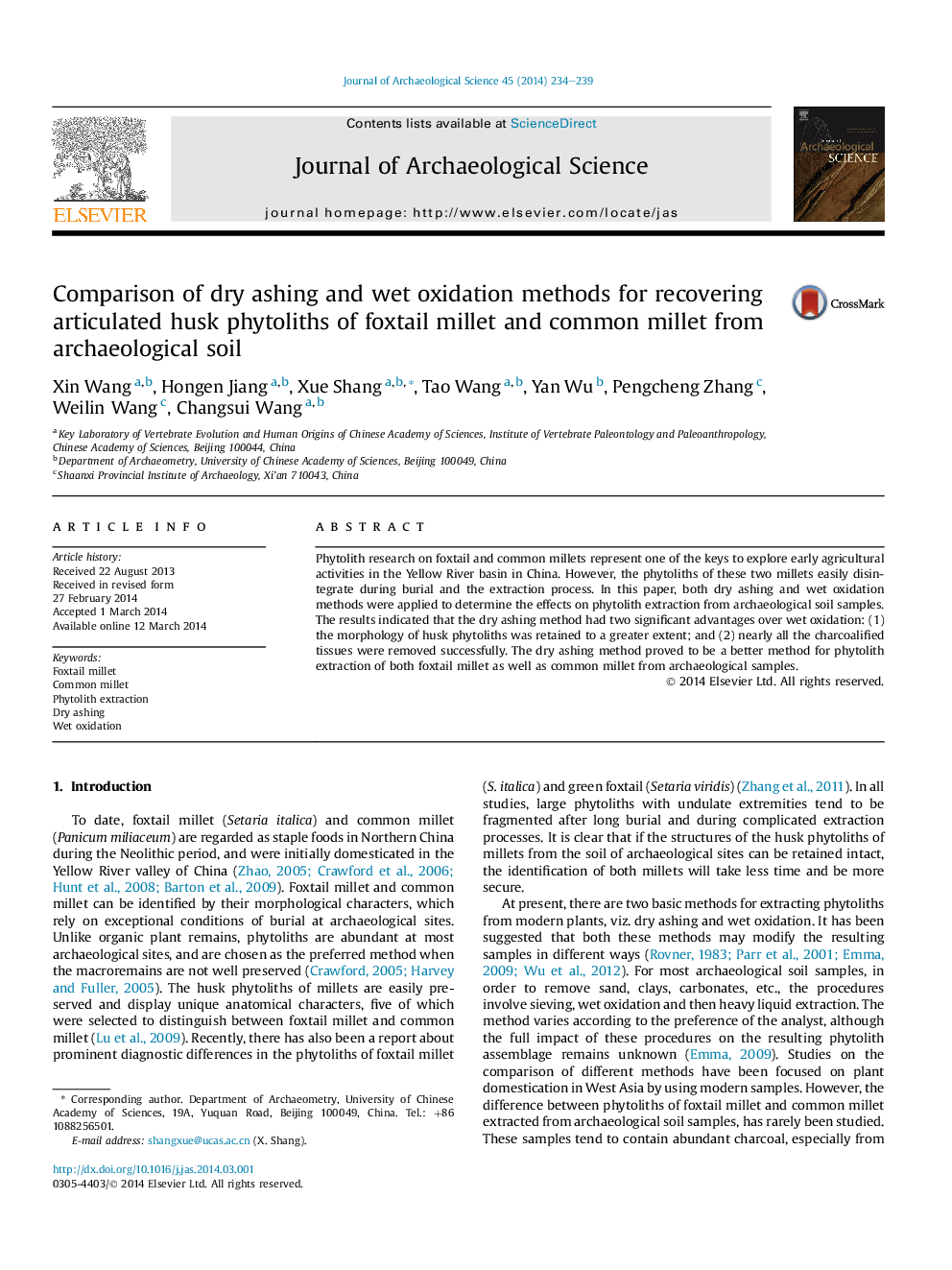| Article ID | Journal | Published Year | Pages | File Type |
|---|---|---|---|---|
| 7443512 | Journal of Archaeological Science | 2014 | 6 Pages |
Abstract
Phytolith research on foxtail and common millets represent one of the keys to explore early agricultural activities in the Yellow River basin in China. However, the phytoliths of these two millets easily disintegrate during burial and the extraction process. In this paper, both dry ashing and wet oxidation methods were applied to determine the effects on phytolith extraction from archaeological soil samples. The results indicated that the dry ashing method had two significant advantages over wet oxidation: (1) the morphology of husk phytoliths was retained to a greater extent; and (2) nearly all the charcoalified tissues were removed successfully. The dry ashing method proved to be a better method for phytolith extraction of both foxtail millet as well as common millet from archaeological samples.
Related Topics
Physical Sciences and Engineering
Materials Science
Materials Science (General)
Authors
Xin Wang, Hongen Jiang, Xue Shang, Tao Wang, Yan Wu, Pengcheng Zhang, Weilin Wang, Changsui Wang,
